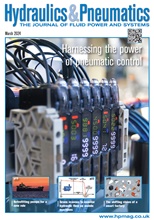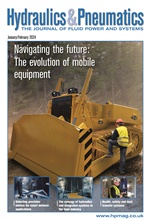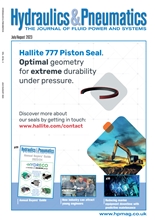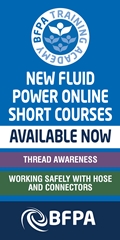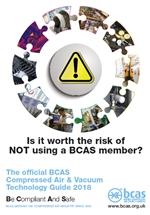- Home » Editorial » Hydraulics
Seven steps to hydraulic cleanliness
equipment to safeguard employees, contractors and site visitors. Similarly, any equipment which could endanger individuals in the event of a failure must employ a lower rating than would be required of equipment with no discernible safety risk.
7. Look at the machine environment
Operating conditions can also impact upon the cleanliness rating required. Cleanrooms, labs and high-care manufacturing facilities are by their nature less likely to pose a contamination risk to hydraulic fluids and are therefore allocated a low risk rating. Average risk is assigned to most general manufacturing facilities, while mills, food manufacturing facilities or anywhere likely to experience dust particles is classified as a poor hydraulic environment. Hostile environments, where the risk of contamination is likely to be very high, should also have their ISO code set at one or more values lower for each size (4µ, 6µ and 14µ). Other environmental factors that would lead to a lower ISO code include high temperatures or humidity, frequent cold start or very high levels of vibration among other extreme operating conditions.
Once an ISO cleanliness code has been established, ongoing monitoring must be put in place to ensure the rating is successfully maintained. This will allow the manufacturer to reap the benefits of minimised downtime, as well as a reduction in the costs associated with component repair, fluid replacement and disposal. Today, real-time monitoring devices are available which, when set to the correct ISO rating, will display a green, amber or red light to alert engineers of dangerously high levels of particle contamination – ideal for production- or safety-critical equipment. Lab-based sampling should also be completed and documented regularly in the absence of real-time monitoring and may be sufficient for higher ratings and less critical equipment.
Brammer’s specialist technical team of hydraulic and pneumatic experts is able to quickly determine ISO ratings for hydraulic components and systems, undertake root-cause analysis in the event of contamination and perform the necessary corrective actions to ensure assets as well as production schedules are protected.
-
Smart Manufacturing & Engineering Week
05 - 06 June, 2024
NEC, Birmingham -
HILLHEAD 2024
25 June, 2024, 9:00 - 27 June, 2024, 16:00
Hillhead Quarry, Buxton, Derbyshire UK



